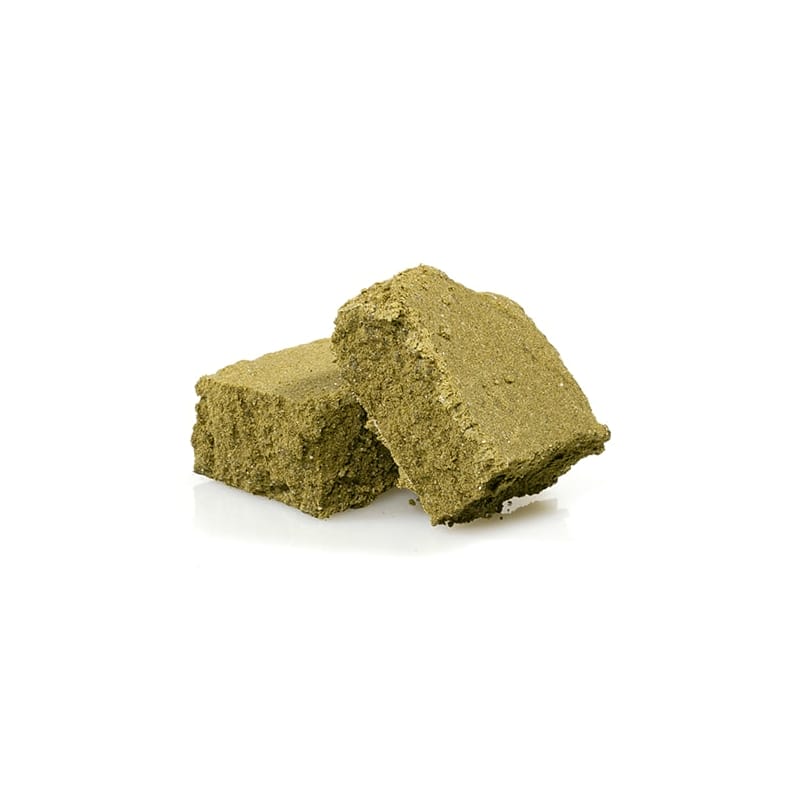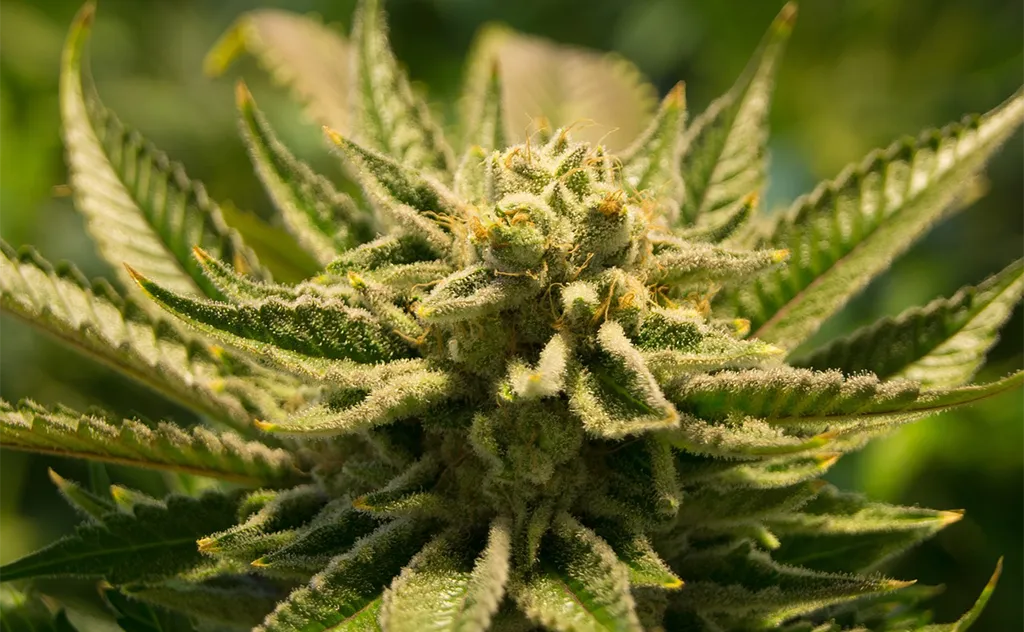Hashish, also known as ‘hash‘, is a psychoactive substance that has a long history of use in various cultures around the world. This cannabis concentrate, derived from the resin of marijuana plants, has not only attracted interest in the past. In its purest state it has always had the allure of the illegal for its hallucinogenic effects, but today it is also gaining popularity in its legal variety.
The use of hashish goes back many centuries, with the earliest documented traces dating back to ancient cultures such as the Assyrians, Babylonians and Egyptians. These civilisations had discovered the psychoactive properties of cannabis and used it in various contexts, including religious ceremonies and medicinal purposes. Over time, hashish has spread to many parts of the world, taking different forms and variations depending on local traditions.
The chemical characteristics of hashish make it a distinctive product compared to traditional marijuana. Its concentration of cannabinoids, particularly THC, is considerably higher, which results in more intense psychoactive effects when consumed. This higher potency is one of the aspects that differentiates hashish from other forms of cannabis and determines its effects on the body and mind.In this article, we will take a closer look at the effects of hashish on health, both short- and long-term, and then focus on its light, legal form. It is important to fully understand how this substance affects individuals and society as a whole in order to assess its overall effects.
What is hashish?
Hashish is a substance obtained from the resin of female cannabis plants (sativa or indica). It takes the form of a solid paste, usually sold in pellets or bricks.
It is obtained by isolating the trichomes, resinous glands found on the surface of the plant’s leaves and flowers. The trichomes can be separated by manual (the method used in ancient times), mechanical or chemical processes. What is obtained can have different shapes and colours depending on the extraction method and the quality of the raw material.
Historically, hashish was inhaled by mixing it with tobacco. Today, however, in many countries, the inhalation of cannabis is prohibited by law, even if it is the light variety. It can, however, be ingested or vaporised.
What is the difference between hashish and weed?
Hashish and weed (or marijuana) are both cannabis products, but there are some key differences between the two.
The first difference is in shape and consistency:
- Hashish: is a brown or black substance, can be sold in the form of blocks, slabs or sheets, its consistency can vary from solid to sticky depending on the production method and the quality of the product (the purer it is, the stickier it is);
- Weed: consists mainly of dried flowers, leaves and stems of the cannabis plant. It has a consistency similar to dried weeds or spices and can vary in colour from light to dark green.
We then move on to the chemical composition:
- Hashish: contains a higher amount of THC, which is the psychoactive principle responsible for the psychotropic effects of cannabis;
- Weed: contains a range of cannabinoids, including THC and CBD, but is generally less concentrated than hashish; however, the THC concentration can vary considerably between different weed varieties.
Let us continue with the effects. We will look at the effects of hashish specifically later, now we will just make a general distinction to understand the difference between hashish and weed:
- Hashish: due to its higher THC concentration, hashish tends to have more potent and psychotropic effects than weed;
- Weed: The effects of marijuana can vary greatly depending on the type and amount consumed, but in general weed can cause altered perceptions, muscle relaxation, increased appetite and a feeling of well-being.
As we said, it is important to note that cannabis laws may vary from country to country and that in some jurisdictions the use and sale of cannabis, whether in the form of hashish or weed, may be illegal or regulated differently.
-
Product on sale
 00Price range: £5.95 through £174.30From 1,74 €/gr
00Price range: £5.95 through £174.30From 1,74 €/gr -
Product on sale
 AfghanPrice range: £7.00 through £349.30From 3,49 €/gr
AfghanPrice range: £7.00 through £349.30From 3,49 €/gr -
Product on sale
 Banana BerryPrice range: £6.30 through £244.30From 2,44 €/gr
Banana BerryPrice range: £6.30 through £244.30From 2,44 €/gr -
Product on sale
 BeldiaPrice range: £7.00 through £350.00From 3,50 €/gr
BeldiaPrice range: £7.00 through £350.00From 3,50 €/gr -
Product on sale
 Bengal CharasPrice range: £7.00 through £349.30From 3,49 €/gr
Bengal CharasPrice range: £7.00 through £349.30From 3,49 €/gr -
Product on sale
 Bubble HashPrice range: £7.00 through £210.00From 4,20 €/gr
Bubble HashPrice range: £7.00 through £210.00From 4,20 €/gr -
Product on sale
 BurbukaPrice range: £6.30 through £192.50From 3,85 €/gr
BurbukaPrice range: £6.30 through £192.50From 3,85 €/gr -
Product on sale
 Caramel Candy | Legal HashishPrice range: £6.30 through £349.30From 2,50 €/gr
Caramel Candy | Legal HashishPrice range: £6.30 through £349.30From 2,50 €/gr -
Product on sale
 CBG KiefPrice range: £3.50 through £154.00From 1,54 €/gr
CBG KiefPrice range: £3.50 through £154.00From 1,54 €/gr
Short-term effects of hashish
The short-term effects of hashish are generally similar to those of marijuana, but are more intense. The main effects are euphoria, relaxation, distortion of the perception of time and space, increased appetite and dry mouth.
As with any other substance, the effects vary from person to person and depend on factors such as the amount taken, tolerance to the substance and the quality of the product.
Hashish is known to induce a feeling of well-being and happiness. This feeling is due to the action of THC, the main active cannabinoid in cannabis. THC acts on cannabinoid receptors in the brain that are involved in the regulation of mood, perception and cognition.
Distortion of perception, in particular, can be subtle or severe and may include time dilation, visions, hallucinations, sensation of reduced space, altered hearing and touch.
Also differentiating it from weed are the effects of hashish on the eyes, as it can cause reddening and inflammation.
How long do the effects of hashish last? They generally begin to appear within a few minutes of consumption and last for 2 to 3 hours.
Long-term effects of hashish
The long-term effects of hashish can then be both physical and psychological. Physical effects include insomnia, respiratory, cardiovascular (increases heart rate and blood pressure), cognitive (i.e. memory, attention and learning), brain development and reproductive problems in both men and women.
Psychological effects may then occur, including both physical and mental dependence, anxiety and paranoia, schizophrenia (especially in young people with a genetic predisposition to the disease) and behavioural problems (such as increased aggression and, consequently, violence).
Although the long-term effects also vary from person to person, it is now well established that continued use of the substance in large quantities can lead to even long-term consequences. However, we are talking about pure hashish, i.e. a product with a high THC concentration.
A recurring question is: how long does hashish withdrawal last? They usually start within a few days after the last intake and peak within a week. Symptoms then begin to gradually diminish and usually disappear within a month.
Effects of hashish on the nervous system
In the light of what we have said so far, we can conclude that hashish is a psychotropic substance that acts incisively on the central nervous system and in particular on cannabinoid receptors. Cannabinoid receptors are present throughout the body, but are concentrated in the brain.
The effects of hashish on the nervous system can be both positive and negative. Positive effects certainly include an increase in dopamine (associated with pleasure and reward), a reduction in the activity of the amygdala (a brain structure related to anxiety and fear), and an increase in the activity of the endocannabinoid system. However, there can also be negative effects, as we saw earlier.
Specific effects on the central nervous system also include:
- Increased brain activity: Hashish can increase activity in certain areas of the brain such as the prefrontal cortex, which is involved in the control of mood, cognition and behaviour;
- Reduced brain activity: on the contrary, it can reduce activity in other areas of the brain such as the hippocampus, which is involved in memory and learning;
- Altered communication between brain cells: can alter communication between brain cells, interfering with the transmission of nerve signals.
As far as the more serious effects are concerned, we are still talking about a product with a high concentration of THC.
Characteristics of legal hashish
Legal hashish is still the same cannabis product, but it contains less THC than the legal limit. In the UK, the legal limit for THC is 0.2%, exactly the same as for light cannabis.
This product is created by licensed cannabis farms. Cannabis inflorescences are harvested during the flowering phase and then dried. Finally, the resin is extracted from the inflorescences and pressed into a solid form.
Legal hashish therefore has the following characteristics:
- It contains less THC than the legal limit;
- It is produced by authorised farms;
- It is subject to quality control.
The use of legal hashish is safe for most people. In this case, the effects of a joint the next day would be much milder, or even non-existent, than those of hashish with a lot of THC. But it is still important to consult a doctor before taking it for medicinal purposes, especially if you have health problems.
The price of hashish in the UK market is around £5-10 per gram. Clearly, this can vary depending on several factors, including the quality of the product, the method of cultivation and production, and availability.
Where to find legal hashish
The shops authorised to sell legal hashish are the same ones that also sell light cannabis. These businesses are subject to strict regulations and must obtain the right licences and authorisations from the competent authorities. This is to ensure maximum safety for consumers.
Such shops may include specialised light cannabis businesses, pharmacies and licensed websites.
Before buying a product, always check that the THC level complies with national laws and that it has been produced by a serious company using state-of-the-art methods.
In Maria CBD Oil‘s online shop you will find a wide selection of high-quality CBD products, created to improve your balance and health. Visit our online shop now and start on your path to a healthier, more harmonious life.
 Contact us
Contact us 







